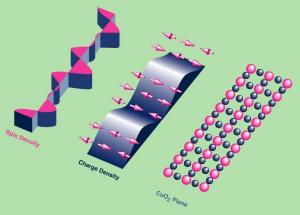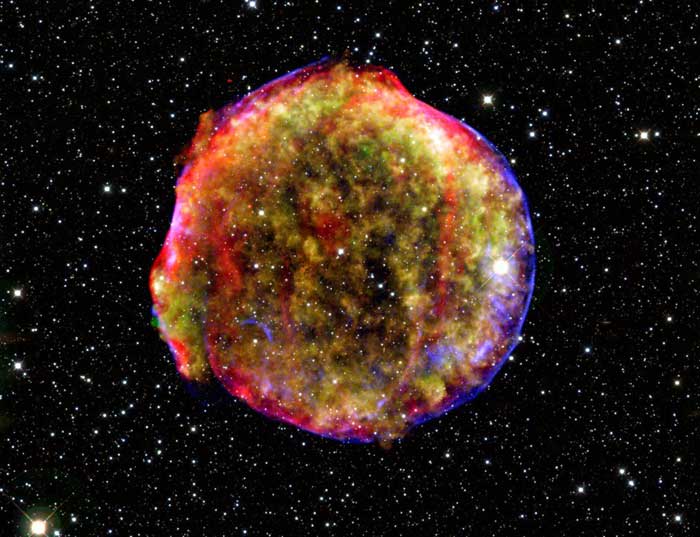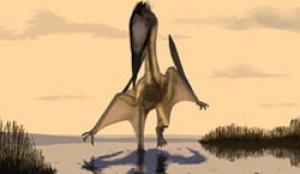Scientists studying a material that appeared to lose its ability to carry current with no resistance say new measurements reveal that the material is indeed a superconductor - but only in two dimensions. Equally surprising, this new form of 2-D superconductivity emerges at a higher temperature than ordinary 3-D superconductivity in other compositions of the same material.

© DOE/Brookhaven National LaboratoryStripe order in the copper oxide planes involves both a modulation of the charge density (blue), detectable with x-ray diffraction, and a modulation of the arrangement of magnetic dipole moments (spin directions) on copper atoms (magenta arrows), detectable with neutron diffraction.
The research, conducted in part at the U.S. Department of Energy's (DOE) Brookhaven National Laboratory, will appear in the November 2008 issue of
Physical Review B, and is now available online.
"Our basic research goal is to understand why and how these materials act as superconductors," said Brookhaven physicist John Tranquada, who led the research. "The ultimate practical goal would be to use that understanding to develop improved bulk superconductors - ones that operate at temperatures warm enough to make them useful for real-world applications such as high-efficiency power lines."



